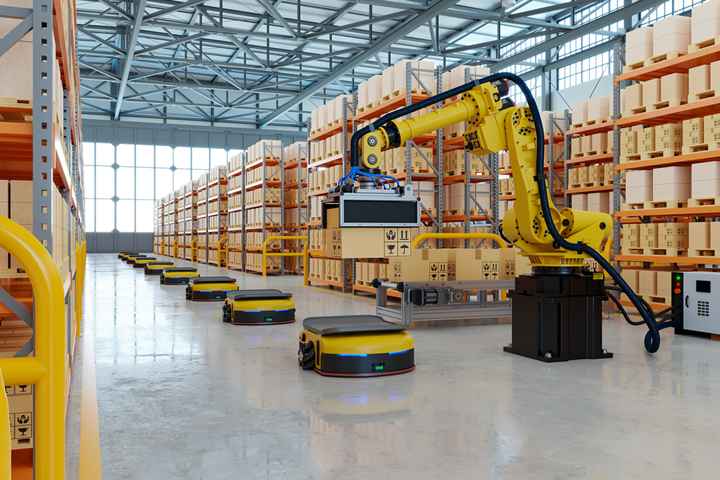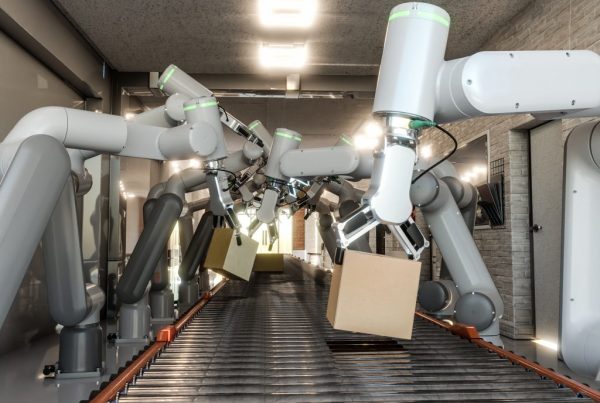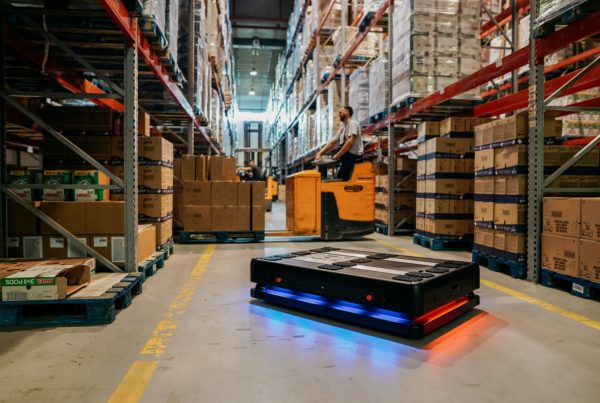Introduction
Warehouse robotics has transformed the field of logistics and supply chain management because of rapid industrial advancement. Companies work to boost operational speed, minimize expenses, and simplify processes, for which robotic automation delivers ideal solutions. The application of warehouse robots creates rapid order processing as they work to reduce human mistakes while redefining conventional storage systems.
How Robotics is Revolutionizing Warehousing
Warehouse operations benefit significantly from robotic automation since it enables the automation of labor-intensive operational tasks. Robot technology enables precise handling of picking operations and packing duties, as well as goods sorting and movement at rapid rates. Their working speed exceeds human capabilities and results in an uninterrupted operation because they never need rest. Automated warehouse picking system in this process lowers ordering and inventory management mistakes, which results in strong customer satisfaction rates.
Boosting Efficiency and Productivity
The implementation of warehouse robotic systems makes operations more productive while simultaneously decreasing overall operational expenses. Computers have limitless work hours, and they effectively eliminate interruptions that arise from worker fatigue and staffing problems. Businesses achieve their delivery goals more easily while sustaining operational stability through robotic optimization during busy times. IQ Robotics systems enhance workplace safety by transferring dangerous tasks, including heavy lifting operations and tall storage rack maneuvers, to robotic systems. The elimination of unsafe labor tasks gives employees time to perform supervisory functions and strategic work.
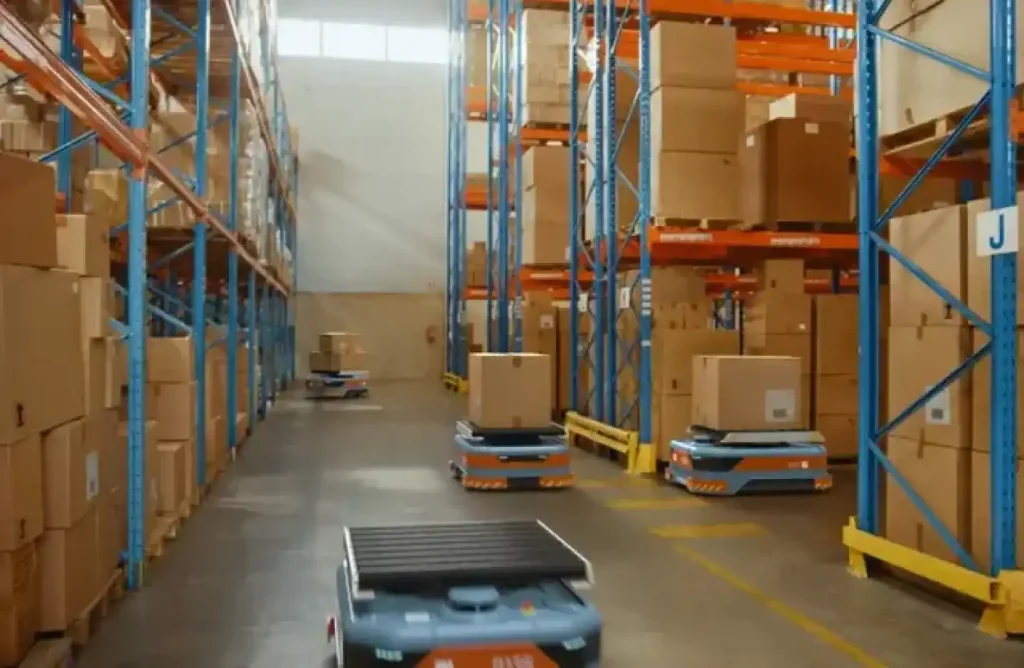
Adapting to Changing Consumer Demands
Generations of changing consumers push warehouses to develop immediate solutions for shortened delivery schedules and bespoke service requirements. Robotics remains essential to fulfill these demands because it enables the essential flexibility needed for quick order processing. Robotic systems enable warehouses to manage seasonal traffic surges, drive promotional events, and process customized orders with rapid speed. Businesses maintain high service levels due to their ability to extend operations without difficulty throughout their peak demand seasons.
Robotic Efficiency in Inventory Management
Any warehouse faces major difficulties when managing inventory because this task stands as one of the most labor-intensive operations that also breeds errors. Robot introduction leads to faster and better execution and precision in process operations. Through AI-enabled sensors, robots run automatic inventory assessments, maintain stock records, and warn about anticipated inventory deficits in real time. Improved stock visibility, lower stockout rate, and precise demand prediction results from this process. The dual outcome provides decreased overstocking expenses and continuous inventory availability of popular products for businesses.
Robots and Artificial Intelligence: A Perfect Partnership
With artificial intelligence integrated into robotic systems, warehouse operations have evolved into the most intelligent they have ever been. Artificial intelligence robots acquire knowledge from their surroundings and make speedy choices as well as adapt to fresh obstacles without requiring continuous software updates. The implementation of AI on robots enables these systems to plan optimal warehouse paths, which enhances productivity and shortens journey times. The ongoing advancement of AI technology will enable warehouse robots to achieve higher autonomy, which will allow them to perform sophisticated tasks autonomously.
Sustainability in Warehouse Robotics
Every industrial sector now acknowledges sustainability as a major concern that also impacts warehouse operational environments. Robotics acts as an environmental solution through its power to minimize energy usage and waste materials. Autonomous robots exhibit high performance levels through their movements, which decreases warehouse requirements for supplementary lighting and heating. Automated systems implement both environmental waste reduction methods in packaging while optimizing product storage and delivery depending on sustainable packaging requirements. Businesses can achieve their sustainability targets through warehouse robotics implementation, which establishes operations compatible with environmentally friendly approaches.
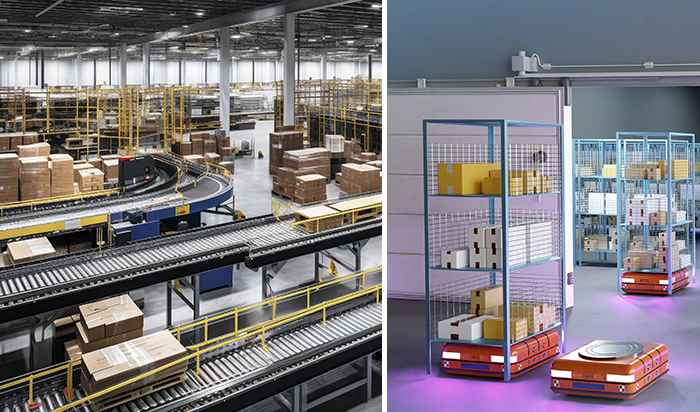
The Road Ahead: Full Automation of Warehouses
The development of fully automated warehouses has progressed to the point where it can be achieved in practical terms. Companies currently use robotic solutions, yet the next advancement involves achieving full automation of robotic-controlled systems. Every warehouse operation could be handled by automatic systems starting from the arrival of inventory until shipment orders go out. Full robotic automation of warehouses enables unlimited operations throughout each day since employees can remain away from the site. Technological progress in robotics and artificial intelligence will lead to an increase in smart warehouses that execute warehouse operations without human intervention.
Return on Investment (ROI) performance is the main reason businesses adopt warehouse robotic systems.
Businesses choose warehouse robotics primarily because they obtain important long-term cost savings through their adoption. Big robotic technology installations require substantial starting expenses that generate remarkable financial savings throughout the extended timeframe. The automation of selecting items and organization management procedures allows businesses to decrease their dependence on human labor, which leads to decreased operational expenses. Warehoused robots can operate nonstop, which creates speedier operational processes and enhances productivity and operational efficiency levels. Robot systems create extensive profit potential through improved operational efficiency and minimized errors, which generates superior ROI investment opportunities for companies that seek operational optimization.
Improved Warehouse Space Utilization
Warehousing real estate functions as a valuable resource that requires optimum utilization because it benefits operational effectiveness. The navigational abilities of robots enable them to handle restricted areas and tackle working conditions that human employees would find obstructed. Machine systems solve the task of both stacking and retrieving items, which enables them to use higher complex storage systems, thus expanding warehouse capacity. Robotic logistics enables warehouses to rearrange their storage layout while using the same amount of available space to store a larger product variety, which leads to optimal resource allocation and cost reductions.
Customizable Robotic Solutions for Every Warehouse
The particular requirements of each warehouse are based on its associated dimensions, together with operational approaches and merchandise characteristics. Robotics systems can adjust their design features specifically for meeting individual warehouse needs. The robotic technology market includes products that suit every warehouse operation, from minor storage facilities to massive distribution centers. The integration of modular robots into warehouse operations requires no substantial modifications to existing systems. Robots provide scale-up and scale-down capabilities regarding demand levels, which enables warehouses to adapt their operations according to business developments over time.

Increased Customer Satisfaction and Faster Delivery Times
The fulfillment of customer satisfaction depends directly on rapid delivery services within modern supply chain operations. The combination of robots in warehouses leads businesses to maximize order speed while picking and packing operations attain superior accuracy, thus enabling faster delivery times and better reliability. The continuous operation of robots delivers orders at a faster pace, which results in expedited shipping times that produce delighted customers. Robotic systems that minimize order fulfillment errors result in better customer satisfaction and increased brand loyalty through minimized incorrect product deliveries.
Collaboration Between Humans and Robots
Robotics systems transform warehouse operations, but they do not seek to perform functions that human workers currently assume. The systems function together with human operators to improve their operational abilities. Robots come into play for carrying out physical work and repetitive operations that leave humans to tackle analytical challenges and decision-making duties. By having humans and robots work together, the entire operational workflow improves while workers experience increased satisfaction, and productivity increases simultaneously. Future organizations will need essential training programs to assist workers in adjusting their roles, which combine with robotic systems, thus allowing for efficient workplace operations.
Data-Driven Insights for Warehouse Optimization
Businesses can use warehouse robotics systems enhanced by AI and IoT to obtain important data for enhancing operations. Robots process performance data instantaneously to demonstrate operational limitations as well as operational inefficiencies and probable performance enhancement areas. The gathered data assists businesses to both maximize warehouse arrangement efficiency as well as enhance inventory control and make more accurate sales predictions. Companies obtain enhanced supply chain efficiency through data analytics, which guides better decision-making as well as operational cost reduction.
Robotic Maintenance and Support
To guarantee sustained operability, robotic systems need regular upkeep together with necessary maintenance support. The availability of predictive maintenance enabled through AI allows robotic systems to self-monitor their functioning, which then triggers alerts for warehouse managers to perform maintenance. The approach reduces system downtime while reducing costs related to expensive repairs. Also, robotic systems currently evolve toward automatic self-diagnostics, which additionally welcome simpler repair procedures alongside system updates that let businesses function optimally without major interruptions.
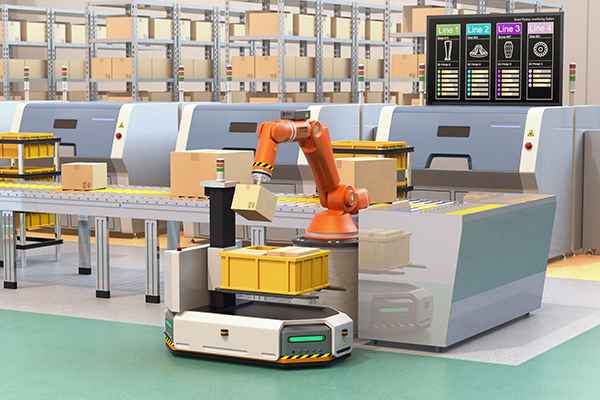
The Role of Robotics in Order Accuracy
Customer trust, together with satisfaction, depends heavily on order accuracy. Warehouse robotics ensures the proper delivery of all orders, starting from the pick process through to packaging and shipment. The utilization of robots in order fulfillment eliminates all chances of human mistakes, resulting in better accuracy. Advanced sensors work with cameras and AI algorithms that allow robots to confirm the selection of precise items, thus achieving heightened accuracy levels. The high accuracy achieved by robotics results in lower return rates and optimized inventory processes, which create contented customers who obtain their correct orders each time they shop.
Robotics as a Competitive Advantage
Organizations operating automated warehouses maintain an advantage against their market competitors. Robotics systems create internal operational enhancements that multiply into increased market responsiveness for companies. Better systematic operations allow businesses to present quick deliveries combined with precision ordering and affordable approaches, which drives up customer appeal. Warehouse robotics adoption is escalating in businesses, which puts postponing robotics implementation at risk of being outperformed. To become leaders within an efficiency-based industry, businesses must implement this technology right now.
The Future of Warehouse Robotics
The combination of artificial intelligence with machine learning and IoT technology allows warehouse robots to become smarter as well as more self-driven. AI robots learn through previous operational records to optimize route paths for making instant decisions that enhance operational efficiency. Both storage tasks and retrieval processes and shipping activities will be managed by automated robots operating independently in upcoming generations of warehouses.
Conclusion
When businesses implement warehouse robotic solutions, they create a solid foundation for persistent business achievement. The growing competition in the logistics industry demands automation as the main element to success, enabling businesses to cut costs and fulfill changing customer needs. Warehouse robotics has arrived in the current moment to revolutionize operations by establishing benchmarks for operational excellence while delivering maximum productivity.
Stay Ahead with Warehouse Robotics!
The future of warehousing is here! Robotics is revolutionizing efficiency, accuracy, and productivity across the industry. Want to stay updated on the latest trends, insights, and innovations? Follow us on Facebook for expert insights, industry updates, and real-world applications of warehouse automation. Join the conversation and be part of the future of logistics!


